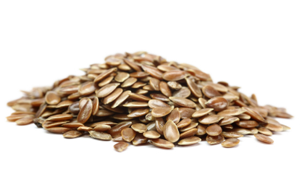Cleansing with Fiber
You may have heard about colon cleansing and that it is important for well-being. But perhaps you’re not really sure how to get your colon from its current state to optimal colon health. Let’s face it, there are so many colon cleanse and detox products on today’s market, each with different ingredients, that it’s hard to know which are really worth trying and which simply aren’t.
Cleansing Naturally
In the world of natural cleansing, there is really nothing that trumps the use of fiber. According to the Institute of Medicine, women should aim for at least 20 grams of dietary fiber each day, and men should get up to 35 grams.
Unfortunately, the average American gets significantly less dietary fiber than recommended, taking in a scant 15 grams a day. This number may be even less for some populations, such teenagers, who tend to live in a fast-food world rife with fiber-depleted foods, and whose typical dietary choices tend to be lower in fiber than the choices made by the adults they live with.
But why is fiber so important?
What does fiber do that makes it so important? Fiber actually plays several roles in the maintenance of colon health and wellness in general. For one thing, insoluble fiber absorbs water as it moves through the intestines. This both softens and increases the bulk of stool. Soluble fiber also forms a gel-like substance as it moves through the digestive tract, slowing digestion and thereby helping to maintain healthy cholesterol levels.

Lentil salad with green beans
Fiber “cleans” the colon as it passes through.
Extra benefits aside, soluble and insoluble fiber are a great help to the colon, as large, bulky stool literally helps sweep the colon clean while it moves throughout the entire large intestine. This property of fiber may help normalize and regulate bowel function.
Fiber from Foods
Naturally, it’s best to get your daily requirement of dietary fiber from the foods you eat. This means steering clear of refined, white flour products (breads, pastas, white rice, etc.) and opting instead for whole-grain or whole-wheat options. Fruits and vegetables are excellent sources of dietary fiber, as well, so including more organic whole foods such as beans, broccoli, spinach, apples, pears, citrus fruits, etc., is a good idea.

Flaxseed
Of course, the problem with relying on dietary sources of fiber is that most people don’t eat a diet high in fiber. For those whose diets are less-than-rich in fiber, a premium-grade, all-natural fiber supplement is definitely a good idea. It should feature an array of natural (herbal) sources such as ground flaxseed and psyllium husks, and should provide at decent amount of fiber per serving. If it has artificial colors or sweeteners added to it, keep looking; the purer the product, the better for your body it will be.
For an all-natural fiber supplement that is an optimal proprietary blend of soluble and insoluble fiber, look to DrNatura’s Colonix Intestinal Cleanser. Taken daily, Colonix intestinal cleanser will boost your daily fiber intake and help promote and maintain digestive health.* You’ll be pleased with its powerful (but no overpowering) action!
1 Fiber: Start Roughing It! - What Should You Eat? (n.d.). Harvard School of Public Health - HSPH. Retrieved March 16, 2011, from http://www.hsph.harvard.edu/nutritionsource/what-should-you-eat/fiber-full-story/index.html#Bottom_line
2 Nutrition Services Department. (n.d.). UW Health-Online Health Fact. Fiber. Retrieved March 16, 2011, from www.uhs.wisc.edu/docs/uwhealth_fiber_190.pdf
3 Stadler, K. (2009). Heart Healthy Eating: Cholesterol, Fat, Fiber, & Sodium. Publications and Resources, Virginia Tech. Retrieved March 16, 2011 from http://pubs.ext.vt.edu/348/348-898/348-898.html
4 Behan, E. (2006). Therapeutic nutrition: A guide to patient education. NY: Lippincott, Williams & Wilkins.
5 Institute of Medicine. Dietary Reference Intakes for Energy, Carbohydrate, Fiber, Fat, Fatty Acids, Cholesterol, Protein, and Amino Acids. 2002. Washington, D.C.: The National Academies Press. Retrieved August 15, 2007 from http://books.nap.edu/openbook.php?isbn=0309085373.

